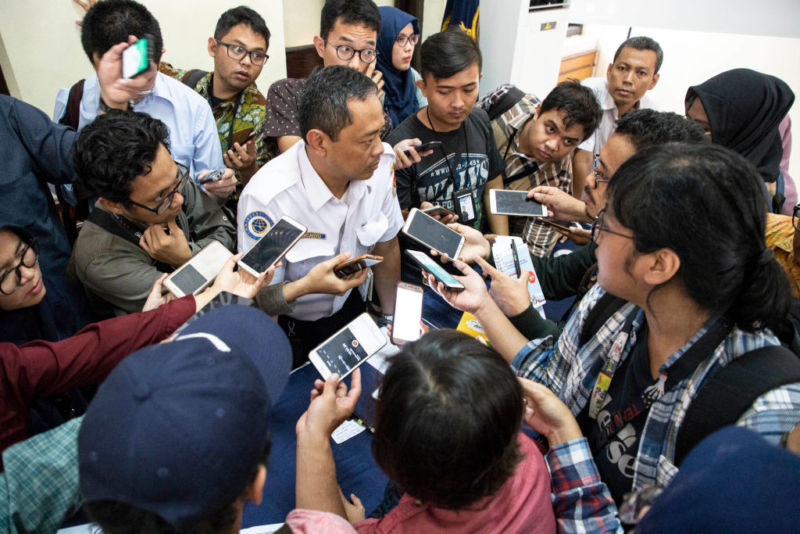Black box data shows pilots fought control system in Indonesia crash

Enlarge / Cpt Nurcahyo Utomo (head of Flight Mode Indonesian Safety Transportation Committee) during the press conference, in Jakarta, Indonesia, on November 28, 2018. (credit: Donal Husni/NurPhoto via Getty Images)
More evidence supporting the theory that faulty sensor data caused the crash of a Lion Air Boeing 737 MAX in October has emerged from the aircraft's flight data recorder. A report released on November 28 by Indonesian crash investigators shows that the pilots of Lion Air Flight 610 fought with the aircraft's maneuvering characteristics augmentation system, or MCAS, nearly from the moment the jet took off from Jakarta on October 29. And the aircraft had suffered from a similar problem on a flight from Bali to Jakarta the day before-a flight that was completed safely after the pilot shut down the 737 MAX's automatic anti-stall system.
"In our view, the plane was not airworthy" during its previous flight, said Nurcahyo Utomo, head of Indonesia's national transport safety committee (KNKT), in a press conference today in Jakarta. Utomo faulted Lion Air's maintenance and safety culture in the crash, though a final finding on the cause of the crash is likely months away.
The 737 MAX lost in the crash had repeatedly had problems with its airspeed and angle of attack (AOA) sensors, both of which feed into the MCAS system. One of the AOA sensors on the lost aircraft was replaced after the problems on the flight from Bali to Jakarta the day before, and the plane was put back into service. The MCAS uses inputs from these sensors to detect if the aircraft is likely to stall-losing enough lift to stay airborne-and automatically adjust control surfaces. Those adjustments would push the nose of the aircraft down to increase the lift generated by the wings with a combination of improved air flow over the wings and increased airspeed.
Read 4 remaining paragraphs | Comments